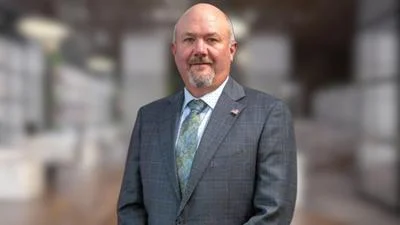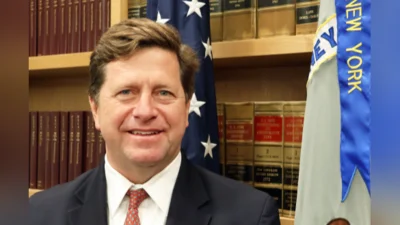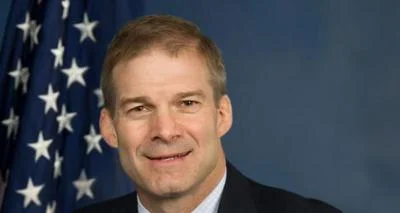The Congressional Record is a unique source of public documentation. It started in 1873, documenting nearly all the major and minor policies being discussed and debated.
“BUILDING EFFICIENT SURFACE TRANSPORTATION AND EQUITY ACT OF 1998” mentioning the U.S. Dept. of Transportation was published in the Extensions of Remarks section on pages E605-E607 on April 21, 1998.
The publication is reproduced in full below:
BUILDING EFFICIENT SURFACE TRANSPORTATION AND EQUITY ACT OF 1998
______
speech of
HON. JOHN R. THUNE
of south dakota
in the house of representatives
Wednesday, April 1, 1998
The House in Committee of the Whole House on the State of the Union had under consideration the bill (H.R. 2400) to authorize funds for Federal-aid highways, highway safety programs, and transit programs, and for other purposes:
Mr. THUNE. Mr. Chairman, I rise today to address the bill before us today, H.R. 2400, the Building Efficient Surface Transportation Equity Act of 1998. This measure probably will have a more profound impact on my State of South Dakota than any other measure this body may consider this year.
The State of South Dakota has 7,803 miles of roads on the State highway system which span over a 77,000 square mile area in the State. As one of the largest States in geography, we have tremendous needs to maintain our network of highways, bridges, and transit connections. While other modes of transportation play an important role in moving goods and people from one point to another, automobile and truck transportation are the most predominant forms used for personal and commercial purposes.
I thank Chairman Shuster, Ranking Member Oberstar, Surface Transportation Subcommittee Chairman Petri, and Subcommittee Ranking Member Rahall for all of their assistance on South Dakota specific concerns. With their help, I was able to include an amendment to Section 107 that would allow federal bridge funds to be used on a de-
icer agent being developed by the South Dakota Department of Transportation (SDDOT) in conjunction with the South Dakota School of Mines and Technology and private industry. The de-icer compound, known as sodium acetate-formate, is a cost-effective, environmentally sound way to keep bridges clear of dangerous icing conditions without the corrosive side-effects of other compounds. The Committee also saw fit to honor my request to reduce paperwork and staff hours in conducting statewide planning by making a conforming amendment to Section 125.
The Committee also saw fit to honor my request to designate Interstate 29 as a High Priority Trade Corridor from Kansas City, MO, to the Canadian border. Since the implantation of the North American Free Trade Agreement in 1993, traffic has increased tremendously on I 29. From 1993 to 1997, car and truck traffic in South Dakota has increased by 46 percent on I 29 from the Iowa boarder to the North Dakota border. Without question, the State of South Dakota and its neighbors served by I 29 should be eligible for programs contained in Section 115 of this bill. I am certain South Dakota will find innovative ways to make commercial transportation on I 29 more efficient and more effective.
I also appreciate the recognition the Committee gave in the report accompanying this bill to the bridge over the Missouri River in Yankton, SD. The existing Meridian Bridge is approaching 75 years in age and is in desperate need of replacement. The committee report appropriately notes that the bridge should be replaced and that the Secretary of the Department of Transportation should make funds available from the Discretionary Bridge Replacement Fund for this purpose.
I especially appreciate the committee's recognition of Congressional Priority Projects I submitted for consideration. These all are important to the State of South Dakota and will help address important safety, congestion, and economic development needs. All of the projects were selected from a list submitted by the SDDOT. I also took the initiative to conduct a series of town hall meetings across the State of South Dakota last August to discuss these priority projects as well as to solicit the views of South Dakotans on our surface transportation priorities.
Through the information provided from these sources, I was able to submit to the Committee a strong slate of projects that deserve funding through this process. Among those projects are two of the three legs of the Eastern Dakota Expressway (EDE). The EDE is a combined vision of former Senator Francis Case and the late Governor George S. Mickelson. These two South Dakota leaders saw the value of connecting our major population centers to Interstate 90 and Interstate 29 via four-lane highways. The funds made available through this bill would be enough for 80 percent of the cost of the project. The remaining 20 percent would represent the standard and appropriate State and local cost share to convert South Dakota Highway 37 between Huron and Mitchell from a two-lane to a four-lane and to convert US Highway 83 between Pierre/
Fort Pierre and Interstate 90 to a four-lane. My hope would be to complete this vision of Case and Mickelson by connecting Aberdeen to Interstate 29 by a four-lane highway. Unfortunately, it appears that important and necessary segment will have to be addressed at another point in time. All the same, I am committed to continue to work for that segment as I work to forward the entire EDE initiative.
The Chairman also should be commended for his tenacity on an issue important not only to South Dakotans, but to so many across the nation.
For too long, Washington has ignored its own rules when it comes to fiscal matters. And one of the most blatant abuses has been the way Washington has misused revenues generated by the motor fuels tax. Last year, Chairman Shuster and other supporters of honesty in budgeting gained a victory by shifting 4.3 cents of the motor fuels tax from general government expenditures to the Highway Trust Fund.
However, as the Chairman has pointed out, the addition of these revenues would cause the Trust Fund balances to skyrocket. If those dollars are going to be paid in by American highway users, then those consumers should have the assurance that those funds are being put to their intended purpose. The level of funding in H.R. 2400 would do just that.
Late January estimates from the Congressional Budget Office indicated that the Highway Trust Fund would have reached a cash balance of $81 billion by the year 2002. Those are dollars paid at the pump by users who expect a return investment in highways, bridges, and transit. Unless the bill before us is enacted, those dollars will end up in a federal black hole.
Most importantly, this feat can be accomplished within the context of a balanced unified budget. Title X of the bill mandates that the additional funding in this bill be offset by mandatory and discretionary spending reductions. This means Congress would stay within the confines of the budget agreement met last year and stay on the path of a balanced federal budget. While there will be critics of whatever offsets may be reached, it will be important to remember a simple fact. That fact is Washington has been siphoning off gas tax dollars for miscellaneous Washington spending. No matter the merits of those other spending priorities, we should not continue to deceive the public by taking what they pay at the pump and using it to feed Washington. Those are dollars that should be used for highways and bridges in my State of South Dakota and in the other 49 States of the Union.
I also would like to commend the Chairman and Ranking Member for the bill's funding ratio between highways and mass transit. Of the House and Senate bills, the House bill clearly takes a more appropriate approach to funding these two needs. Of the $217 billion in the House bill, $181 billion would fund highway initiatives and $36 billion would be available to mass transit. The Senate version on the other hand would place only $171 billion in highways and $41 billion in transit. The House funding split, in my view, represents a more responsible approach for the State of South Dakota and the nation.
The total funding levels contemplated in this measure indeed would have an important impact on the nation's and South Dakota's transportation priorities. Under this bill, South Dakota's annual average allocation would total approximately $144 million a year. Under the Intermodal Surface Transportation Efficiency Act (ISTEA), South Dakota received approximately $119 million a year, representing an annual increase of $25 million. Further, the level in H.R. 2400 would boost funding by more than $40 million annually over the House bill back in 1991.
Without the funding levels Chairman Shuster has advocated, South Dakota would not be able to realize these increases. At the same time, I would be remiss if I did not express my concern over the formula share given to my State in this bill. As it stands, South Dakota's percentage of formula programs would reduce from 0.67 percent to 0.52 percent. Such a reduction simply is not acceptable to our State of South Dakota. The Chairman and many of my colleagues already are familiar with my sentiments about the formula. They fully realize how I feel and how my State feels about such a reduction in our share. At the same time, I fully appreciate the composition of the House would lend itself to a formula that reflects the desires of more populated areas. I also realize that historically, the Senate has produced formulas that more closely reflect my preference and the preference of my State. In fact, at this point in 1991, the House formula gave South Dakota a 0.52 percent share while the Senate produced a share of 0.77 percent. This difference is almost identical to that produced this year by our two Houses of Congress. I am hopeful, therefore, that the final product will yield a share that improves upon that crafted under ISTEA.
The Chairman has been very patient and very understanding in an effort I mounted with several other members from similarly impacted Western States. I along with Mr. Young of Alaska, Mr. Skeen of New Mexico, Mr. Ensign of Nevada, Mr. Gibbons of Nevada, Mr. Crapo of Idaho, Mrs. Chenoweth of Idaho, Mr. Hill of Montana, Mr. Pomeroy of North Dakota, Mrs. Cubin of Wyoming, Mr. Redmond of New Mexico, and the late Mr. Schiff of New Mexico, all worked for this provision to be included in H.R. 2400.
The amendment would have recognized the unique challenges states with low population densities and large geographic areas face as they attempt to meet highway needs. The amendment would have acknowledged this need I and others felt was missing from H.R. 2400 by creating an allocated program for low-density states. Each of the qualifying States experience share reductions in H.R. 2400. The funds for this program would have been offset through other allocated programs--not apportioned programs, thereby not impacting the apportionment of other States--and would have been distributed based upon National Highway System (NHS) miles and vehicle miles traveled on the NHS. The amendment therefore fairly based distribution on needs in terms of highway miles and highway use.
While the amendment would not have fully corrected the apportionment shortfall, it would have helped to cushion the fall. In the opinion of Mr. Shuster, Mr. Oberstar, Mr. Petri, and Mr. Rahall, the amendment resembled too much of an attempt at a State-specific redistribution. In working with the Committee leadership, we chose not to offer the amendment.
In light of the improbability to gain approval of the Western States Amendment, I feel compelled to explain my dissatisfaction over the formula given to South Dakota and other similarly impacted Western States. South Dakota has a backlog of over $500 million in maintenance and construction on its highways and bridges and 42 percent of our 678 mile Interstate highway system is in fair or poor condition.
Still, I am encouraged by so much the Chairman has accomplished through this measure, including the victory of dedicating motor fuel taxes to their intended purpose. I also appreciate him resisting imposing penalties on States for failing to adopt certain laws. No matter the value of policy objectives, the Federal Government should not blackmail States into adopting environmental, safety, or other laws. Washington has learned from previous efforts that such contingencies only breed ill-will between the Federal Government and State and local leaders. This bill instead uses incentives to achieve real results.
Likewise, the Chairman should be congratulated for including the text of H.R. 4, the Truth in Budgeting Act, as Title VII of this bill. This provision, of which I am an original cosponsor, would help ensure that we remain honest to the American public in how Washington uses their gas tax dollars.
I also want to voice my support for the ethanol tax incentives. A provision included in Senate bill, S. 1173, extending the tax incentives for ethanol production should be made a part of the conference report. Value-added opportunities are of tremendous importance to my entire State of South Dakota--not just the agriculture community. In South Dakota, the industry adds $61 million to the States's economy annually. From 1996 to 2002, the ethanol industry is expected to pump $51 billion into the U.S. economy. That means jobs in small towns and rural areas. Without the assurance that this incentive is in place, it would be extremely difficult for producers and investors to plan for the future. Ethanol has value beyond just the agriculture economy, it also has important environmental benefits that Congress should continue to encourage.
I recently hand-delivered 850 letters from my constituents to Speaker Gingrich asking him to continue his support of the ethanol tax incentives. I am pleased the Speaker expressed his strong support for these incentives and consequently expect that support to carry through the conference process on this bill.
Finally, I would like to commend the Chairman and the rest of the House leadership, including Speaker Gingrich and Majority Leader Armey, for heeding the call of the rank and file to schedule consideration of this bill prior to the upcoming district work period. For a time, it appeared Congress would have attempted to go home without considering this measure. As my colleagues know, however, the current extension of ISTEA is set to expire on April 30. Seeing this deadline on the horizon, I joined Mrs. Emerson of Missouri and Mr. Pease of Indiana in circulating a letter among our colleagues pledging our intention to vote against adjournment later today if H.R. 2400 has not been considered. Over 100 signatures were gathered in a matter of just a few hours. The issue has both national and local support. Letting yet another deadline pass on federal highway programs would have been more than the South Dakota Department of Transportation, the contractors of South Dakota, and most importantly, the motorists of my State could bear. Hopefully, such an occurrence will be avoided with today's action.
In light of these factors, I intend to vote in favor of passage as I did in subcommittee and full committee consideration. Again, I thank Chairman Shuster, Ranking Member Oberstar, Subcommittee Chairman Petri, and Subcommittee Ranking Member Rahall for their hard work and dedication to bringing truth and honesty to our federal surface transportation programs.
____________________








